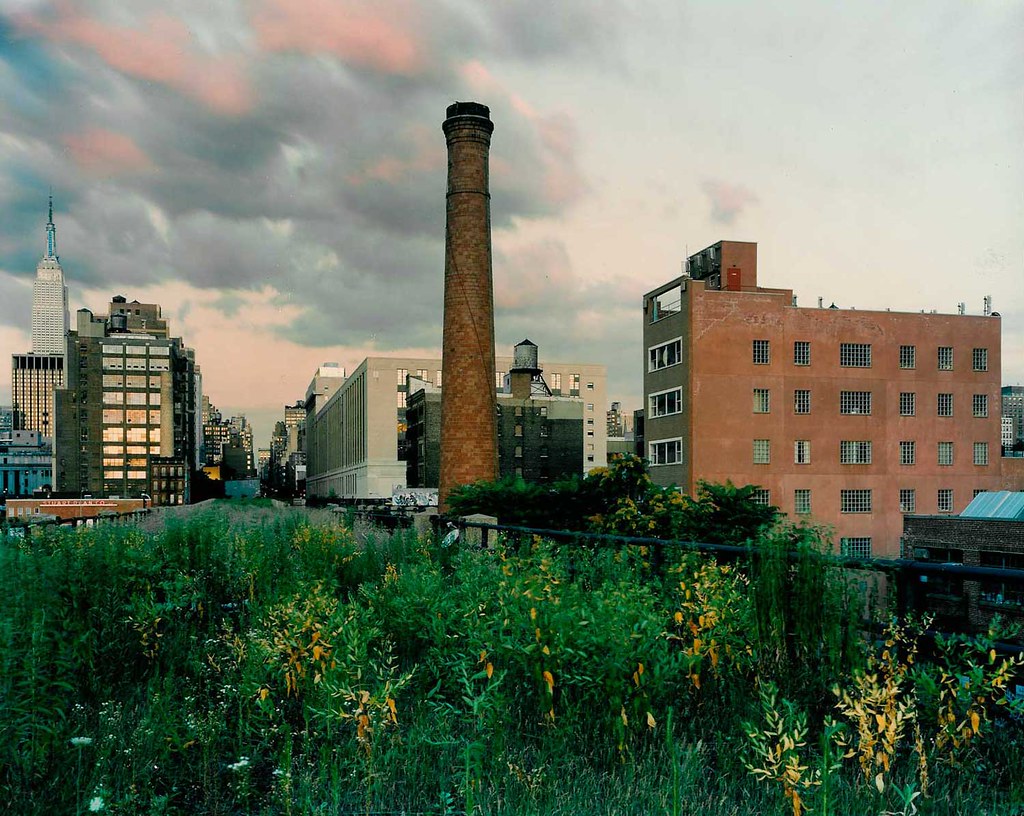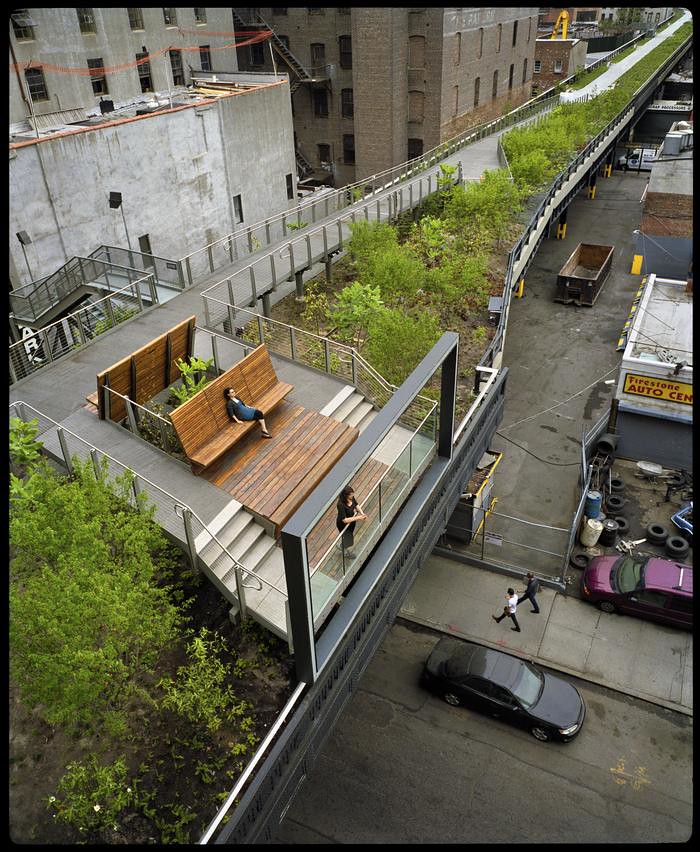Walking along the city’s most innovative public space, The High Line, you’ll find it difficult to believe that this was ever anything other than what it is today. Beautiful, landscaped, busy and evolving, today’s High Line gives only a suggestion of its previous function. Built in the 1930s, this formerly rusting and overgrown stretch of metal served as train tracks elevated thirty feet in the air, a solution to the many accidents occurring between freight trains and street-level traffic after street-level railroads were authorized in 1847. As you walk on this transformed elevated path, from Gansevoort Street in the Meatpacking District to 30th Street in Chelsea, you can spot the railroad tracks among the fields of flowers.
 The recycling of an old railway into an urban park has had a great impact on New York City. This is the city’s version of a European passeggiatta. Every day is a new experience on the High Line: in any given stroll you’ll find people from all over the world happily walking, snapping pictures, and marveling at the plantings and city views, and the procession never ends. It’s energizing and detoxing at the same time. You can walk it from end-to-end, or just pick a section of it to visit and then “camp out” for a spell. It’s whatever suits your mood and your pace.
The recycling of an old railway into an urban park has had a great impact on New York City. This is the city’s version of a European passeggiatta. Every day is a new experience on the High Line: in any given stroll you’ll find people from all over the world happily walking, snapping pictures, and marveling at the plantings and city views, and the procession never ends. It’s energizing and detoxing at the same time. You can walk it from end-to-end, or just pick a section of it to visit and then “camp out” for a spell. It’s whatever suits your mood and your pace.
The furthest downtown entrance to the High Line is at Gansevoort Street (in the Meatpacking District) off 10th Avenue, and after you ascend the steps you’ll immediately find yourself surrounded by all sorts of plants and flowers. Gansevoort Woodland which feeds into Washington Grasslands is the stretch between Gansevoort Street and 14th Street, an oasis of beautiful plants, walkers, loungers, and musicians.
 Entrances at 14th, 16th and 30th streets have both stairs and elevator access (coming soon to 23rd Street). On 14th Street you are rewarded with a breathtaking landscape – on one side you have the Hudson River and on the other you have what appears to be an endless view up 14th Street. At 16th Street, you’re rewarded with public restrooms that are clean and monitored.
Entrances at 14th, 16th and 30th streets have both stairs and elevator access (coming soon to 23rd Street). On 14th Street you are rewarded with a breathtaking landscape – on one side you have the Hudson River and on the other you have what appears to be an endless view up 14th Street. At 16th Street, you’re rewarded with public restrooms that are clean and monitored.
After you walk on the path underneath the dramatic Standard Hotel which completely straddles The High Line, The Diller-Von Furstenberg Sundeck offers some foot-weary refreshment with its water feature. You can take off your sneakers and splash around in the inch of water, or sit on one of the benches and let the water run over your toes as you relax. Nearby are lounge chairs for resting or napping, always popular locales. The setting is almost ethereal, a wonderful contrast to the urban gritty-chicness of the Meatpacking District below.
 At the Chelsea Market passage you can grab a refreshing snack. L’Arte Del Gelato serves fresh, artisanal gelato and sorbetto from their charming pink-and-white cart. Or line up for a refreshing treat from People’s Pops selection of homemade fruit-based ice pops and shaved ice. The flavors change frequently, with farm-friendly choices like roasted red plum, tarragon, and blueberry. All are pretty amazing.
At the Chelsea Market passage you can grab a refreshing snack. L’Arte Del Gelato serves fresh, artisanal gelato and sorbetto from their charming pink-and-white cart. Or line up for a refreshing treat from People’s Pops selection of homemade fruit-based ice pops and shaved ice. The flavors change frequently, with farm-friendly choices like roasted red plum, tarragon, and blueberry. All are pretty amazing.
If you walk down a few steps you next arrive at a strip on a lower level known as The Porch. There you’ll find The Green Table, an open-air cafe with a beautiful view of the Hudson River. The Green Table prides itself on using only food sourced from local family farms that exercise humane and environmentally friendly practices. You can order bruschettas, sandwiches, fruit, wine and beer for a casual lunch or dinner.
And that is all for part one of our tour of The High Line. Come back Friday for the Stairway to Nowhere, The Lawn, and many other things that are featured in part two of the tour of this innovative space.
High Line history, rules, regulations, and schedules can all be found at http://www.thehighline.org/ . The High Line is open from 7am-11pm daily, with last entrance at 10:45pm.


[...] Taking a Tour of Manhattan’s High Line, Part 1 [...]